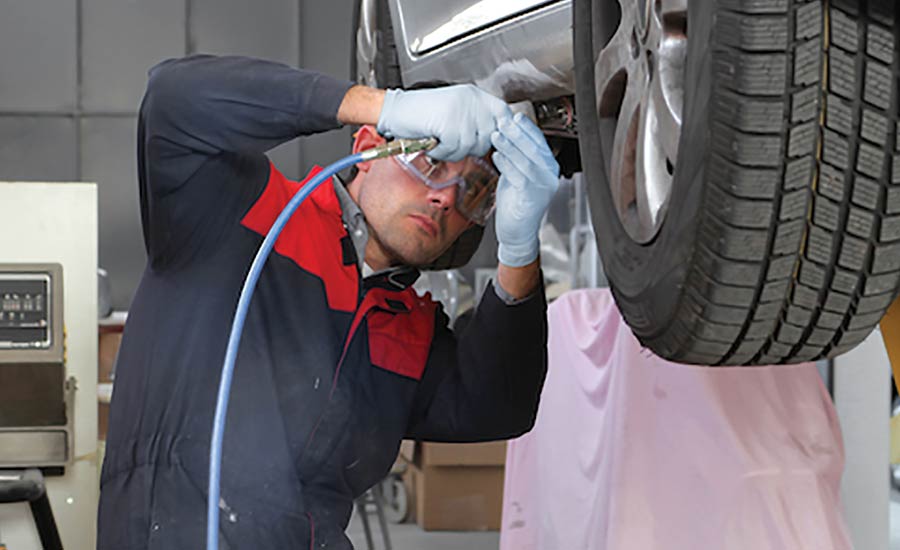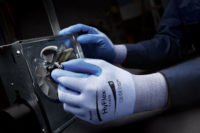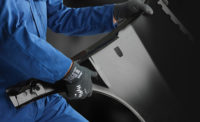We live in a world where our office chairs, our car seats, our keyboards and our phones are designed with ergonomics in mind. It’s no longer a stretch for us to believe the right chair design can improve our posture or a funky keyboard can help reduce the risk of carpal tunnel syndrome.
It should come as no surprise that ergonomic design is now also being used to improve the experience of wearing gloves. In the future, you may choose gloves not only based on certain features or the level of protection they provide – but also based on how they support the long-term health of the muscles and joints in your hands and arms. It’s true, and it starts with ergonomics.
Understanding ergonomics
Before we dive too deeply into what ergonomics is in relation to hand protection, let’s be clear about what it isn’t.
This isn’t about comfort—or, more accurately, it isn’t just about comfort. Comfort is a component of ergonomics the way sweet or sour is a component of taste. It’s a critical piece, to be sure, and absolutely integral to a successful personal protective equipment (PPE) program because PPE that isn’t comfortable invites non-compliance and potentially increases the risk of developing musculoskeletal issues long term. But ergonomics goes deeper.
In an effort to better understand the science of ergonomics and the impact of gloves on the hands and associated muscles, we consulted with experts from US Ergonomics, a consulting and testing organization that advises on ergonomics around the world and tests and certifies products that meet ergonomic standards for improving user comfort, fit and productivity while reducing risk factors related to musculoskeletal conditions.
Those conversations led to a deeper dive into the muscles that workers use to perform certain tasks, how much effort those muscles expend during those tasks, and the impact of repetitive motion on the muscles and surrounding joints.
The facts are staggering. Nearly two thirds of reported occupational injuries can be classified as repetitive stress reactions, and workers who suffer repetitive motion injuries, on average, require 23 days to fully recover—14 more than the average for all other injuries. These injuries cost employers some $80 billion per year. Figures like these point to a need for improvement in the design of personal protective equipment.
Applying ergonomics to gloves
Every task performed with the hands requires muscle effort. Some tasks require more effort than others or impact more muscles than others, but they all require effort. Gloves protect the hands during these tasks, and we know they can help minimize effort in some cases by providing grip assistance.
But gloves can also impede motion—a stitch pattern or mold can run counter to the movement required to complete a task. The cuff of the glove can pull against a necessary movement. This is specific to certain tasks; the same glove that works against certain movements may be perfectly suited for others.
With that in mind, half the battle is to understand the movements workers make with their hands on any given job. From there, it’s possible to design and engineer gloves that at least minimize any resistance from the glove and, at best, actually support and encourage the movements necessary for the job.
Imagine a job requiring repeated gripping and clockwise turns—maybe tightening a lid, for example. A manufacturer that understands that task can develop a glove that works with the hands to complete the job. The difference when making that motion once may be negligible — but hundreds of times an hour? Thousands of times every day? For hundreds of workers?
Small improvements can have a huge impact, and not just in reducing the risk of injury. Reducing muscle effort makes the job easier, keeps the worker fresh longer, and increases productivity.
The benefits
Let’s dive deeper into those benefits, starting with productivity. There is a real, noticeable, short-term advantage to wearing a glove designed ergonomically for a specific job. Touch your forefinger to your thumb. Do it again, and again. Eventually, you will feel some cumulative strain in the muscles in your forearm.
Now, stretch a rubber band between the finger and thumb and repeat the same task. The strain starts sooner and is more severe. That’s a simple, somewhat extreme example of the difference between an ergonomically designed glove and one that actually makes the task more difficult. In the real world, that increased stress translates to more breaks and more time required to complete the job.
Long term, the consequences of using the wrong glove can be more severe, which means the benefits are more valuable. The most common repetitive use injury is carpal tunnel syndrome, which affects more than eight million people in the U.S. On average, about 120,000 people annually undergo surgery to relieve work-related carpal tunnel symptoms. This isn’t a small problem, but small improvements can make a big difference.
That’s why we’re putting a spotlight on ergonomics — to embed ergonomics knowledge in safety and health professionals who purchase gloves, and to assist manufacturers to apply ergonomics to safety equipment designs and manufacturing processes. All glove manufacturers are committed to the same basic principles: making hand protection and safety solutions that help workers do their jobs more efficiently while reducing the risk of short- and long-term health concerns.



